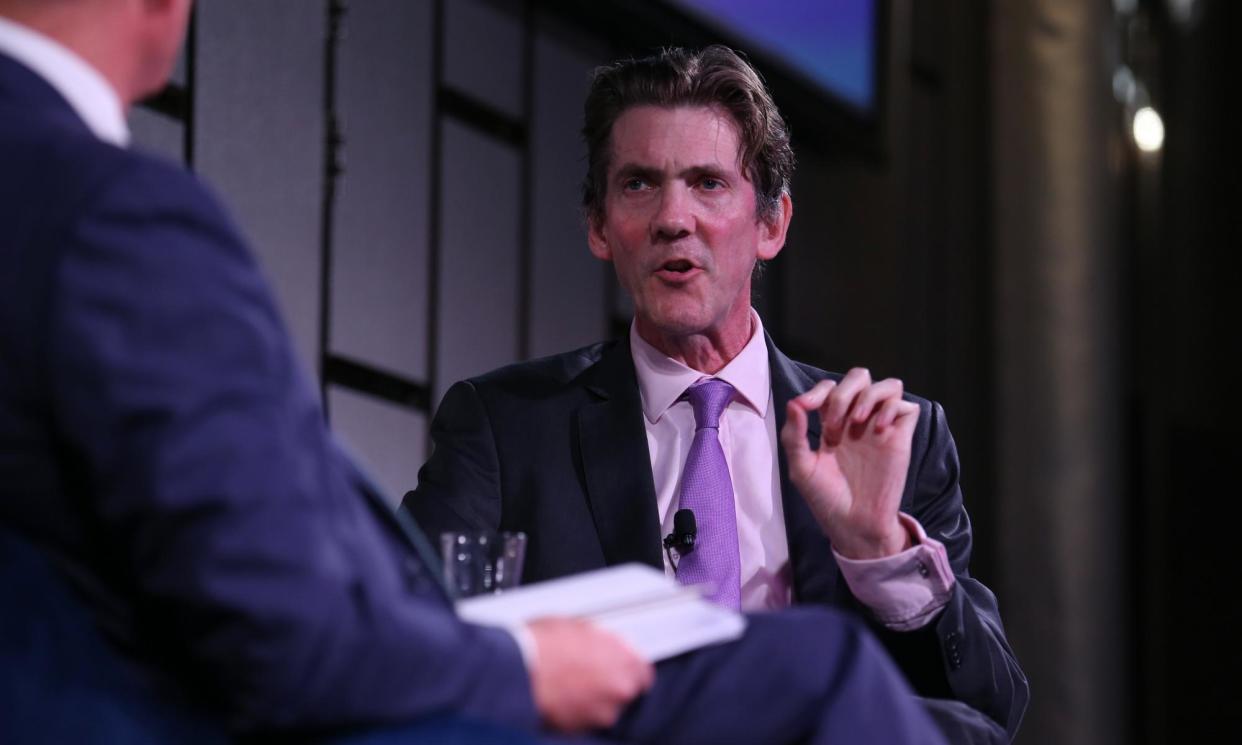Can Australia’s borrowers dodge another interest rate hike? We’ll know more soon

May’s higher-than-expected inflation figures prompted a widespread gloom that the Reserve Bank of Australia would have to increase interest rates again – but there is narrow cause for hope for the country’s strained mortgage holders.
The return of a headline consumer price index with a four in front of it for the first time since November – when the RBA last raised the cash rate – certainly stirred markets, the media and those in Canberra.
There is now a better than one-in-three chance of a 14th rate rise when the bank’s board meets on 5-6 August, investors bet. Those hoping for certain relief in the form of a rate cut will have to peer well over the horizon towards November 2025.
An early federal election called on the premise of falling mortgage costs, in other words, seems ruled out for now.
Labor political strategists banking on a rate cut to go to the polls on are facing diminishing prospects. Current market expectations suggest a cut from the RBA's current cash rate of 4.35% isn't priced in ... until November 2025. (Via ASX.) pic.twitter.com/GaXeWuBCat
— @phannam@mastodon.green (@p_hannam) June 26, 2024
In Sydney on Thursday night, the new RBA deputy governor, Andrew Hauser, will be pressed at the Citi A50 Australian Economic Forum over what he makes of the May inflation figures and whether the central bank board will lock in a rate increase when it next meets on 5-6 August. (Spoiler: he will do his best to not rule anything in or out.)
To the cause for hope. Excitable punters and headline writers aside, the reality is the RBA has said all along it would be following the data. When it comes to inflation, the governor, Michele Bullock, has said she pays attention to the quarterly numbers and those won’t land until 31 July.
What we do know is that the central bank forecasts for the June quarter already anticipate some acceleration in annual headline inflation from 3.6% in the first three months of 2024 to 3.8% in the April–June period.
Taking into account we had 3.6% in April and 4% for May, technically we are still on that 3.8% course.
Related: Lift prices, find your niche or shut: Australian cafes face tough choices as inflation bites
The inflation bulls, for now at least, have grounds to claim validation. The trimmed mean inflation measure that the RBA generally cares most about did indeed tick up to 4.4% in May from 4.1% in April – hardly the trajectory to get back to a 2-3% target.
The NAB promptly became the most pessimistic of the big four banks, pushing back their expectations for a rate cut from November this year until May 2025 – the last possible month the next federal election could take place.
“The mix of slow growth and gradual progress on inflation reflects the RBA’s decision to embrace a ‘lower for longer’ approach – a lower rate peak compared to other advanced economies, resulting in a longer period at that peak,” Alan Oster, NAB’s chief economist, said in a note.
“It is possible the board will change course and raise rates at its August meeting, especially if the [June quarter] print exceeds expectations, but with the labour market easing we don’t believe their hand will be forced.”
ANZ moved a fortnight ago to predict the first cut wouldn’t be until February, while the Commonwealth Bank and Westpac are sticking for now with their November 2024 rate cut calls.
Luci Ellis, formerly the RBA’s chief economist who took over as Westpac’s top economist just before the last rate rise, said that her bank “always” had its predictions under review.
Ellis sees no need to shift Westpac’s forecasts just yet – not least because her team correctly picked the 4% May inflation result, compared with the market’s consensus view of 3.8%.
What is key, though, is “whether or not the RBA [was] surprised by the number”, she said, adding that Hauser’s response to questions tonight may be revealing.
And as Westpac noted on Thursday, “the monthly indicator only includes price updates for around 60% of the inflation basket and should be interpreted with caution”.
John Hawkins, a senior lecturer at the University of Canberra and formerly of both the Treasury and the RBA, also thinks people may be reading too much into the May data.
“The CPI actually fell slightly in the month,” Hawkins said. “The annual rate only jumped as there was a big fall last May” when the rate fell to 5.6% from April’s 6.8% pace.
Main reason for the little spike in inflation today?
The May 2023 was replaced in the annual figures by the May 2024 figures.
Last year in May prices fell 0.4%, this year they fell just 0.1%.
That's basically it. Prices did actually fall in May. pic.twitter.com/6edUjpq2E1— Greg Jericho (@GrogsGamut) June 26, 2024
Unless month-on-month prices rise by more than 0.6% in the current month, the annual percentage growth should return to a decline, he said. A 0.3% rise, for instance, would translate into a 3.7% quarterly pace or less than the RBA expects.
“I don’t think [Wednesday’s 4%] number will force the [RBA] to increase rates,” Hawkins said. “But it won’t do much to ease their concerns that inflation is not coming down that rapidly.”
“The path to an interest rate cut remains narrow but it is still there.”


